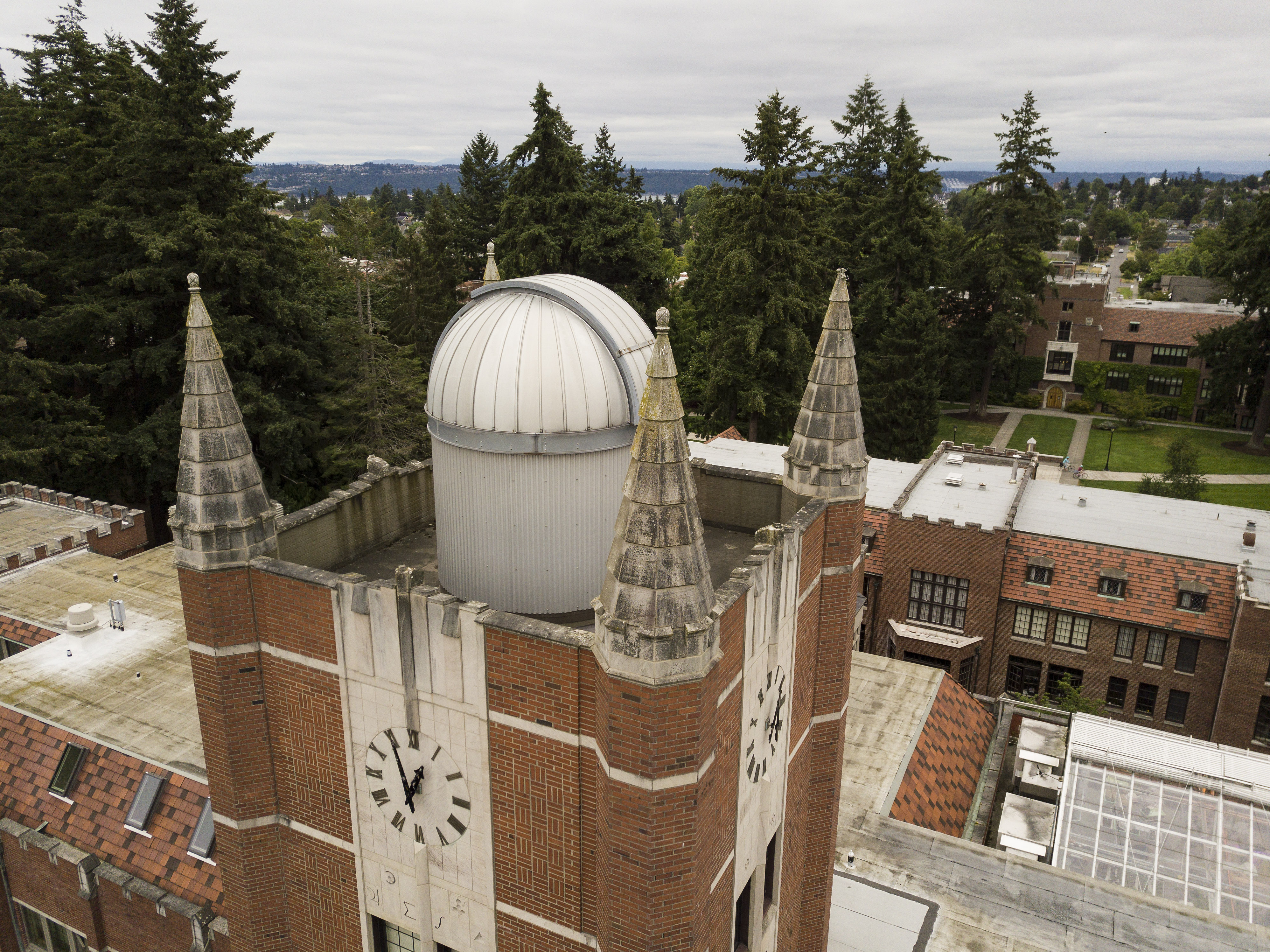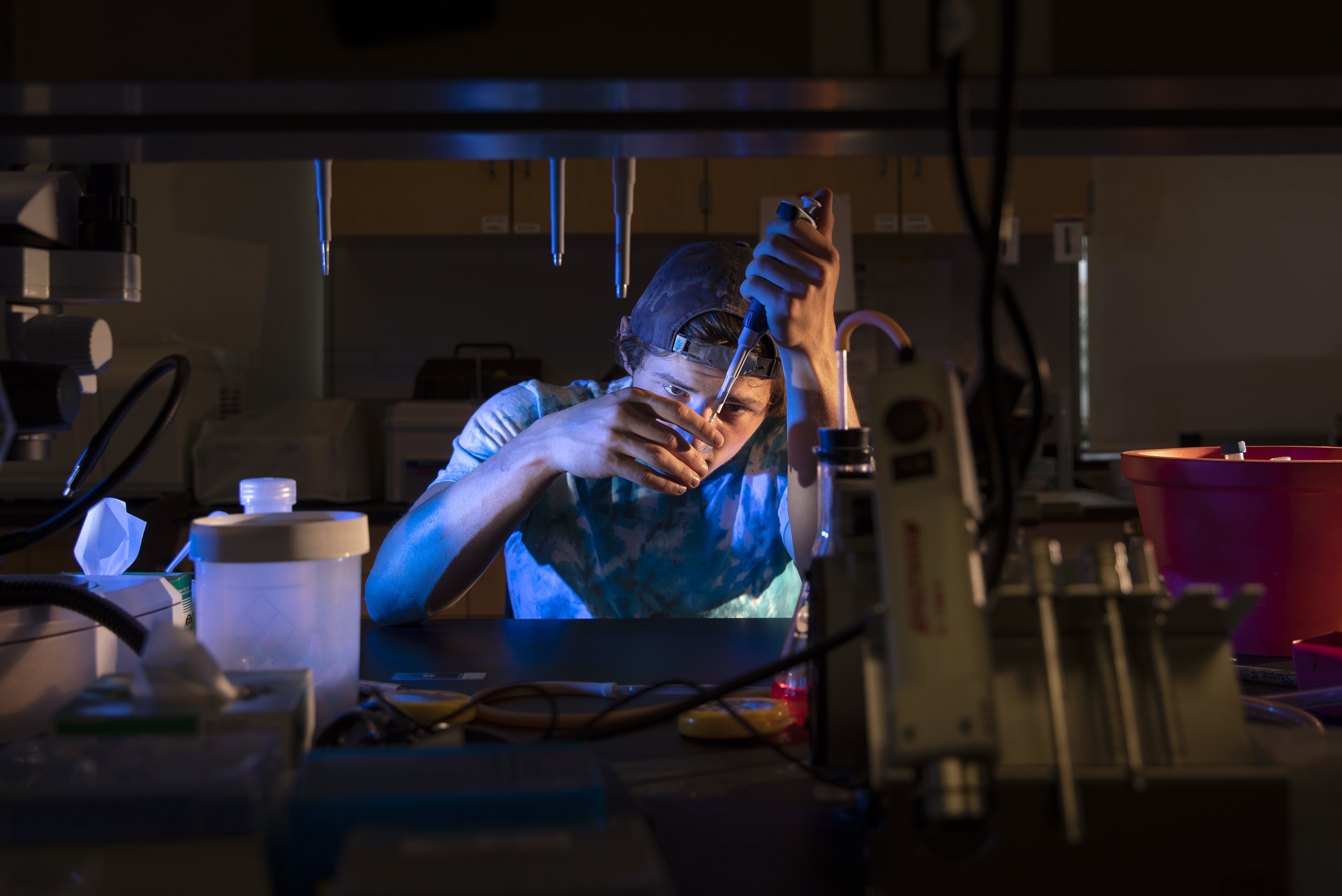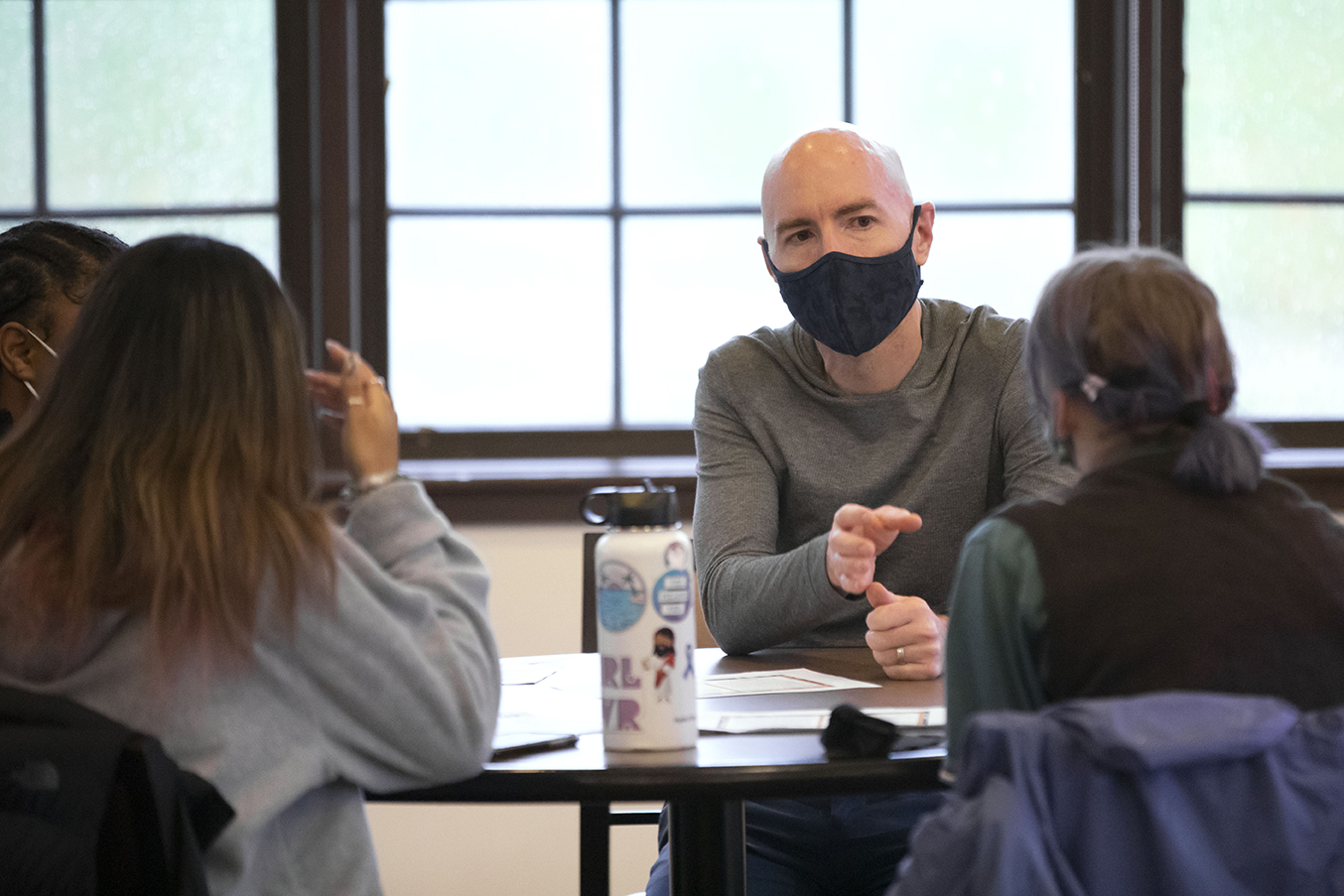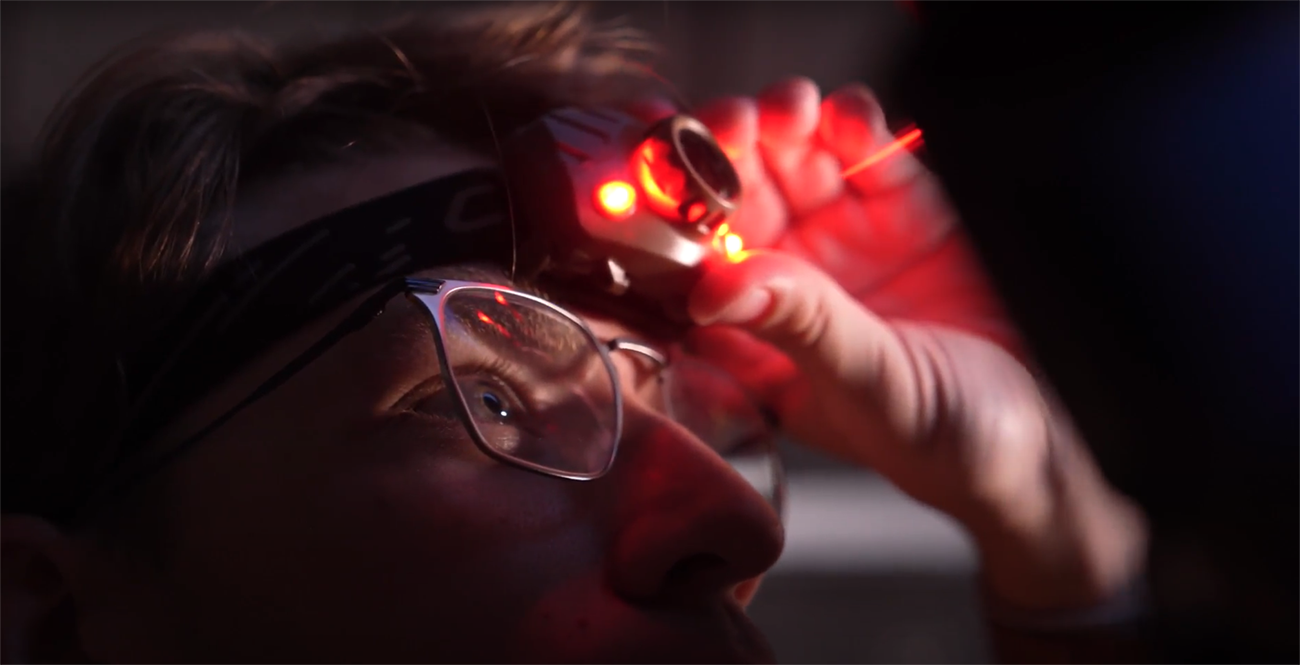Austin Glock ’23 combs the night sky for exoplanets using the university’s rooftop observatory
It’s a cold, clear night in the pitch-black dome of the observatory at University of Puget Sound. In the dark, Austin Glock ’23 makes minute adjustments to the telescope by the light of a headlamp. He’s focusing on Arcturus, a bright orange star located 37 lightyears away. He’s using Arcturus to calibrate the telescope in order to observe something which few people have ever seen—a planet orbiting another star in our galaxy.
“I'm doing differential star photometry, which means we’re looking at stars with light levels that fluctuate. This could be due to a number of factors, but one thing it might mean is that there’s a planet orbiting that star,” Glock says. “By measuring how much the light dips, how long it dips for, and the shape of the resulting light curve, we can determine whether or not it is an exoplanet and get some information about its orbital period and size.”














